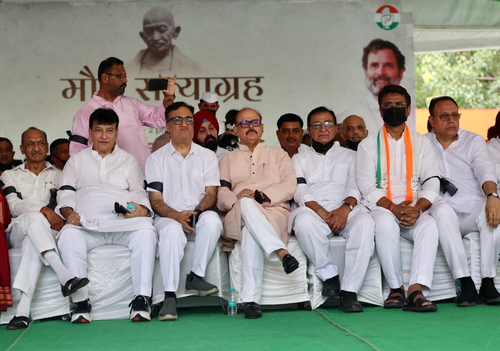
New Delhi, July 23 : Congress Delhi unit on Sunday held a ‘Maun Satyagraha’ (Silent Protest) against the BJP-led government over the Manipur crisis and disqualification of Rahul Gandhi as a member from Lok Sabha.
Scores of Congress leaders and party workers under the leadership of its Delhi unit chief Anil Kumar Chaudhary, wearing black ribbons, staged the protest at the Jantar Mantar.
“Silent Satyagraha was observed against the dictatorship of the Central government, communal violence in Manipur for more than two and a half months and BJP’s attempt to suppress Rahul Gandhi’s voice raised for the poor,” said Chaudhary.
The Congress, which has been blaming the N Biren Singh government in Manipur over the current situation, has stepped up its attack at the BJP after the video of two women being stripped, paraded, and sexually assaulted surfaced on social media.
Manipur Police on Saturday arrested one more accused who is a juvenile, taking the total number of arrests in Manipur women assault case to six.
In March, Gandhi was disqualified from Lok Sabha as a member following his conviction by a Gujarat’s court in a 2019 defamation case.






